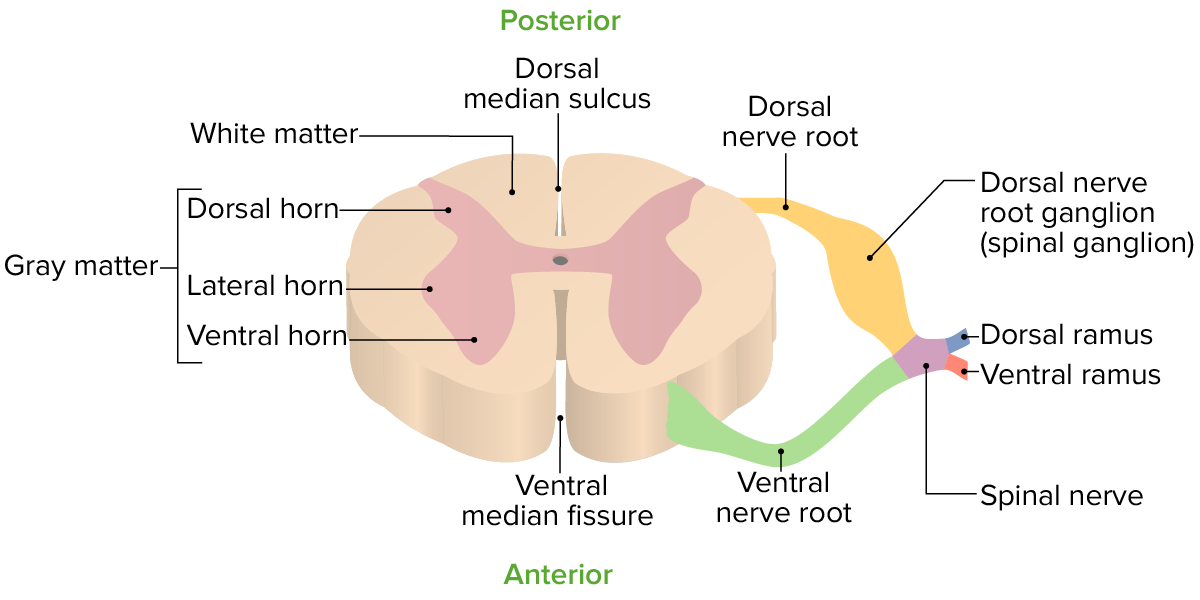Playlist
Show Playlist
Hide Playlist
Case: 58-year-old Woman with Weakness and Neck Pain
-
Slides Diseases of the Spinal Cord.pdf
-
Download Lecture Overview
00:00 In this talk, we will review the intradural extramedullary causes of myelopathy. 00:07 Let's start with a case. This is a 58-year-old woman with neurofibromatosis type 1 who presents for evaluation of progressive neck pain and leg weakness. She says that about 3 months ago, she started to notice heaviness and weakness of her right leg. This gradually worsened to include the left leg, but her symptoms have remained worse on the right where she has a noticeable limp. Over the past few months, she has developed weakness of the right arm and hand. She is now having difficulty dropping objects. Examination shows 4/5 strength in the right upper and lower extremity, there is 5-/5 strength in the left lower extremity, and full strength in the left upper extremity. Deep tendon reflexes are hyperreflexic in the bilateral legs with bilateral Babinski signs and a right arm Hoffman's sign. So there are a number of features of this case that we want to hone in on. The patient has symptoms in the arm and leg only, sparing the cranial nerves which points us to a spinal cord localization. Deep tendon reflexes are hyperreflexic and we have significant upper motor neuron signs which also supports that localization. Imaging was done to further evaluate this patient and here we're looking at 2 axial sections of the cervical spine. 01:30 On the left, we have the T2 non-enhanced images and on the right a T1 gadolinium enhanced MRI sequence. What we see here are 2 lesions. In the left, you can see these 2 lesions surrounding the spinal cord, abutting the cord and resulting in compression and abnormal contour of the cord at this level of the cervical spine. 01:54 We see on the right that these 2 lesions are avidly contrast enhancing. So, this presentation is most consistent with what type of myelopathy? Extradural, intradural extramedullary, or intradural intramedullary? Well, this isn't a presentation of an intradural intramedullary process. For those, we think about things like multiple sclerosis, diseases that occur within the spinal cord and we see the lesions here are outside the spinal cord. This is the presentation for an intradural extramedullary process and we think about things like meningioma. This presentation is consistent with this localization given the asymmetry that pain is common and the prominent leg followed by arm symptoms. This is not the presentation of an extradural process. 02:51 Imaging helps to localize this to an intradural extramedullary process.
About the Lecture
The lecture Case: 58-year-old Woman with Weakness and Neck Pain by Roy Strowd, MD is from the course Diseases of the Spinal Cord.
Included Quiz Questions
Which type of myelopathy is associated with meningiomas?
- Intradural extramedullary
- Extradural
- Intradural intramedullary
- Usually symmetric
- Pure sensory myelopathy
Which of the following clinical presentations is associated with intradural extramedullary myelopathy in the cervical spine?
- Asymmetric lower extremity weakness, positive Babinski sign, and neck pain
- Symmetric lower extremity pain and weakness
- Bowel and bladder dysfunction, positive Babinski sign, and neck pain
- Bowel and bladder dysfunction, symmetric lower extremity pain, and neck pain
- Bilateral sensory loss with motor intact
Customer reviews
5,0 of 5 stars
| 5 Stars |
|
5 |
| 4 Stars |
|
0 |
| 3 Stars |
|
0 |
| 2 Stars |
|
0 |
| 1 Star |
|
0 |




